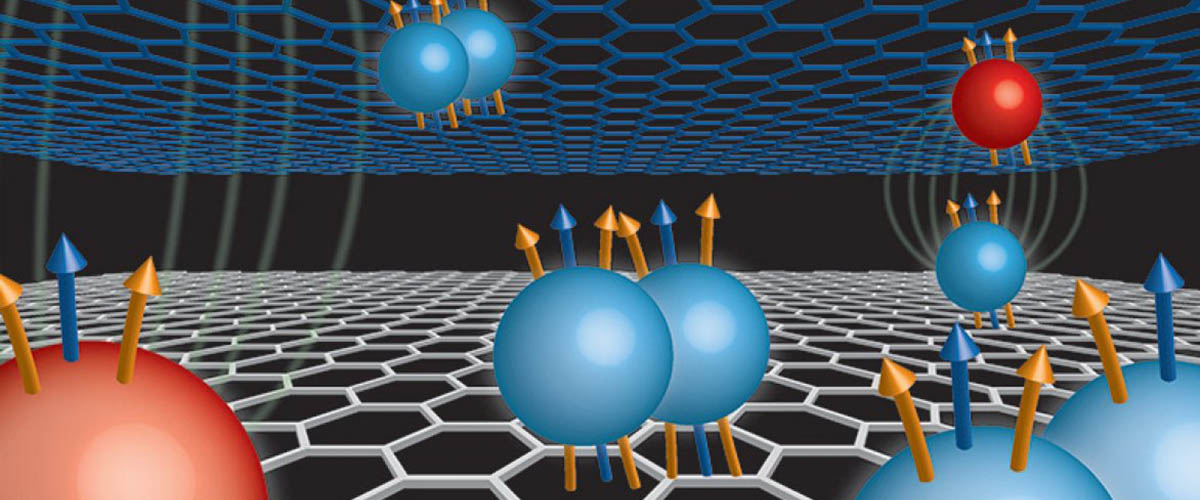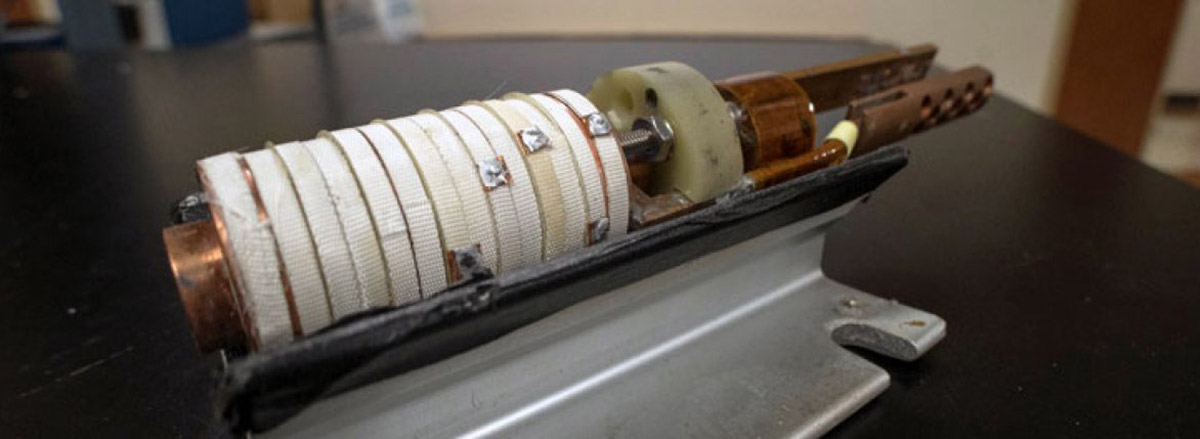Contact: Kevin Stacey, Brown University
PROVIDENCE, RI — Researchers from Brown and Columbia Universities have demonstrated previously unknown states of matter that arise in double-layer stacks of graphene, a two-dimensional nanomaterial. These new states, manifestations of what’s known as the fractional quantum Hall effect, arise from the complex interactions of electrons both within each graphene layer as well as across layers.
"The findings show that stacking 2D materials together in close proximity generates entirely new physics," said Jia Li, assistant professor of physics at Brown, who initiated this work as a postdoctoral researcher at Columbia working with Cory Dean, professor of physics and Jim Hone, professor of mechanical engineering. "In terms of materials engineering, this work shows that these layered systems could be viable in creating new types of electronic devices that take advantage of these new quantum Hall states."
The research is published in the journal Nature Physics.
The Hall effect, discovered in 1879, emerges when a magnetic field is applied to a conducting material in a perpendicular direction to a current flow. The magnetic field causes the current to deflect, creating a voltage in the transverse direction called the Hall voltage. The strength of the Hall voltage increases with the strength of the magnetic field.
The quantum version of the Hall effect, whose 1980s discovery was awarded a Nobel Prize, was found in experiments performed at low temperatures and with strong magnetic fields. The experiments showed that, rather than increasing smoothly with magnetic field strength, the Hall voltage increases in stepwise (or quantized) fashion. These steps are integer multiples of fundamental constants of nature and are entirely independent of the physical makeup of the material used in the experiments.
A few years later, researchers working at temperatures near absolute zero and with very strong magnetic fields found new types of quantum Hall states in which the quantum steps in Hall voltage correspond to fractional numbers, hence the name fractional quantum Hall effect. The discovery of the fractional quantum Hall effect won another Nobel Prize, in 1998. Theorists later posited that the fractional quantum Hall effect is related to the formation of quasi-particles called composite fermions. In this state, each electron combines with a quantum of magnetic flux to form a composite fermion carrying a fraction of an electron charge, giving rise to the fractional values in Hall voltage.
The composite fermion theory has been successful in explaining a myriad of phenomenon observed in single quantum well systems. This new research used double-layer graphene to investigate what happens when two quantum wells are brought close together. Theory had suggested that the interaction between two layers would lead to a new type of composite fermion, but it had never been observed in experiments.
For the experiments, the team built on many years of work at Columbia to improve the quality of graphene devices, creating ultra-clean devices entirely from atomically flat 2D materials. The core of the structure consisted of two graphene layers separated by a thin layer of hexagonal boron nitride as an insulating barrier. The double-layer structure was encapsulated by hexagonal boron nitride as a protective insulator, and graphite as a conductive gate to change the charge carrier density in the channel.
"Once again the incredible versatility of graphene has allowed us to push the boundaries of device structures beyond what was previously possible." says Cory Dean, a professor of Physics at Columbia University. "The precision and tunability with which we can make these devices is now allowing us to explore an entire realm of physics that was just recently thought to be totally inaccessible. "
The graphene structures were then exposed to strong magnetic fields — millions of times stronger than Earth's magnetic field.
The research produced a range of fractional quantum Hall states — some of which demonstrate excellent agreement with the composite fermion model, and some of which had never been predicted or seen.
"Apart from the interlayer composite fermions, we observed other features that cannot be explained within the composite fermion model," said Qianhui Shi, the paper's co-first author and a postdoctoral researcher at Columbia University. "A more careful study revealed that, to our surprise, these new states result from pairing between composite fermions. Pairing interaction between adjacent layers and within the same layer give rise to a variety of new quantum phenomena, making double-layer graphene an exciting platform to study."
"Of particular interest", says Jim Hone, professor of mechanical engineering at Columbia, "are several new states that have the potential of hosting non-Abelian wavefunctions — states that don't quite fit the traditional composite fermion model and that could be useful in making ultra-fast quantum computers." In non-abelian states, electrons maintain a kind of "memory" of their past positions relative to each other. That has potential in enabling quantum computers that don’t require error correction, which is currently a major stumbling block in the field.
"These are the first new candidates for non-Abelian states in 30 years," Dean said. "It's really exciting to see new physics emerge from our experiments."
Other coauthors on the paper were Qianhui Shi, Yihang Zeng, Kenji Watanabe, Takashi Taniguchi, James Hone and Cory Dean. The research was supported by the National Science Foundation (DMR-1507788), the David and Lucille Packard Foundation and the Department of Energy (DE-SC0016703). The magnetic field experiments were done at the National High Magnetic Field Laboratory in Tallahassee, Florida, a user facility funded by the National Science Foundation (DMR-1644779) and the state of Florida.
Story by Kevin Stacey, courtesy of Brown University






